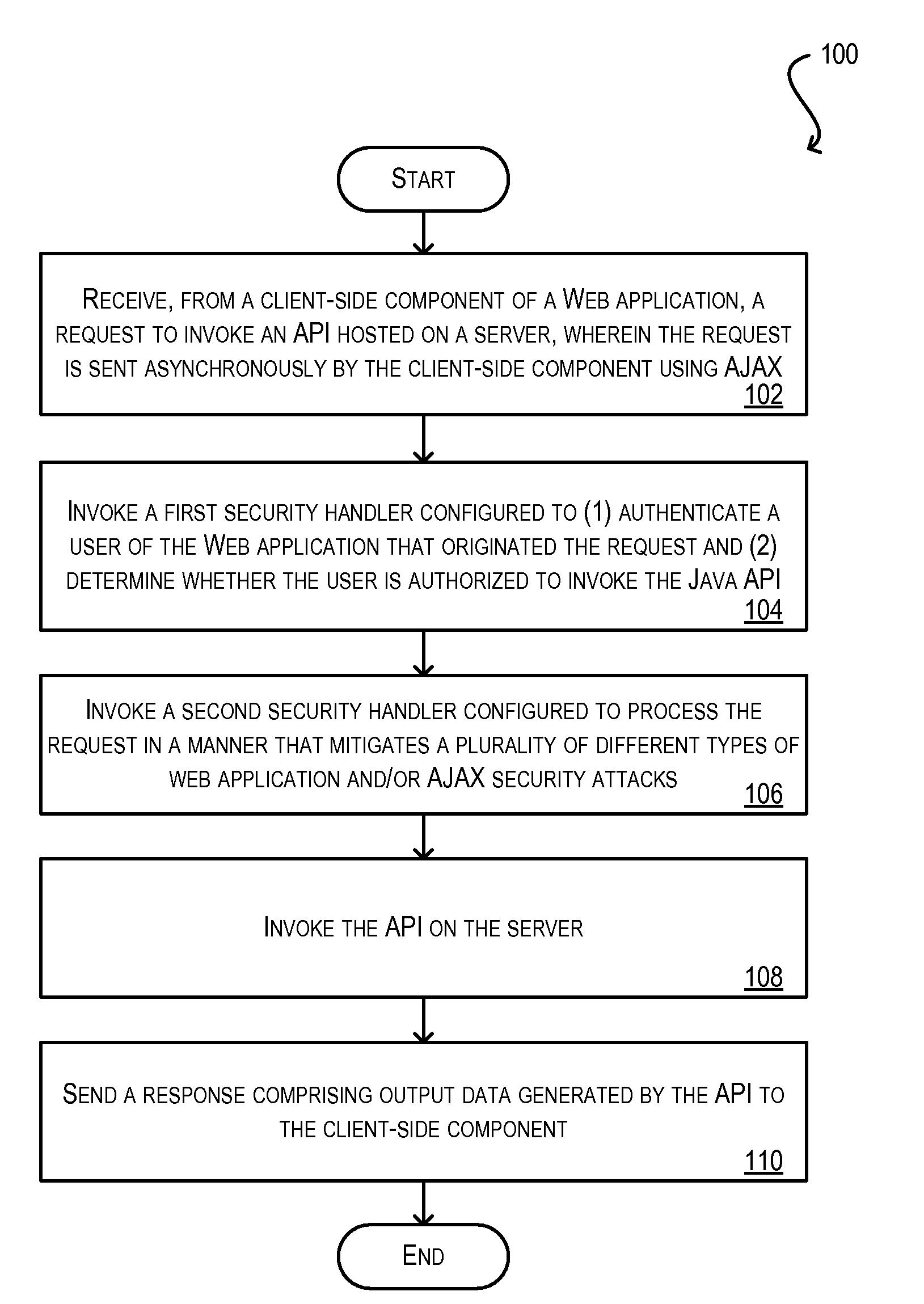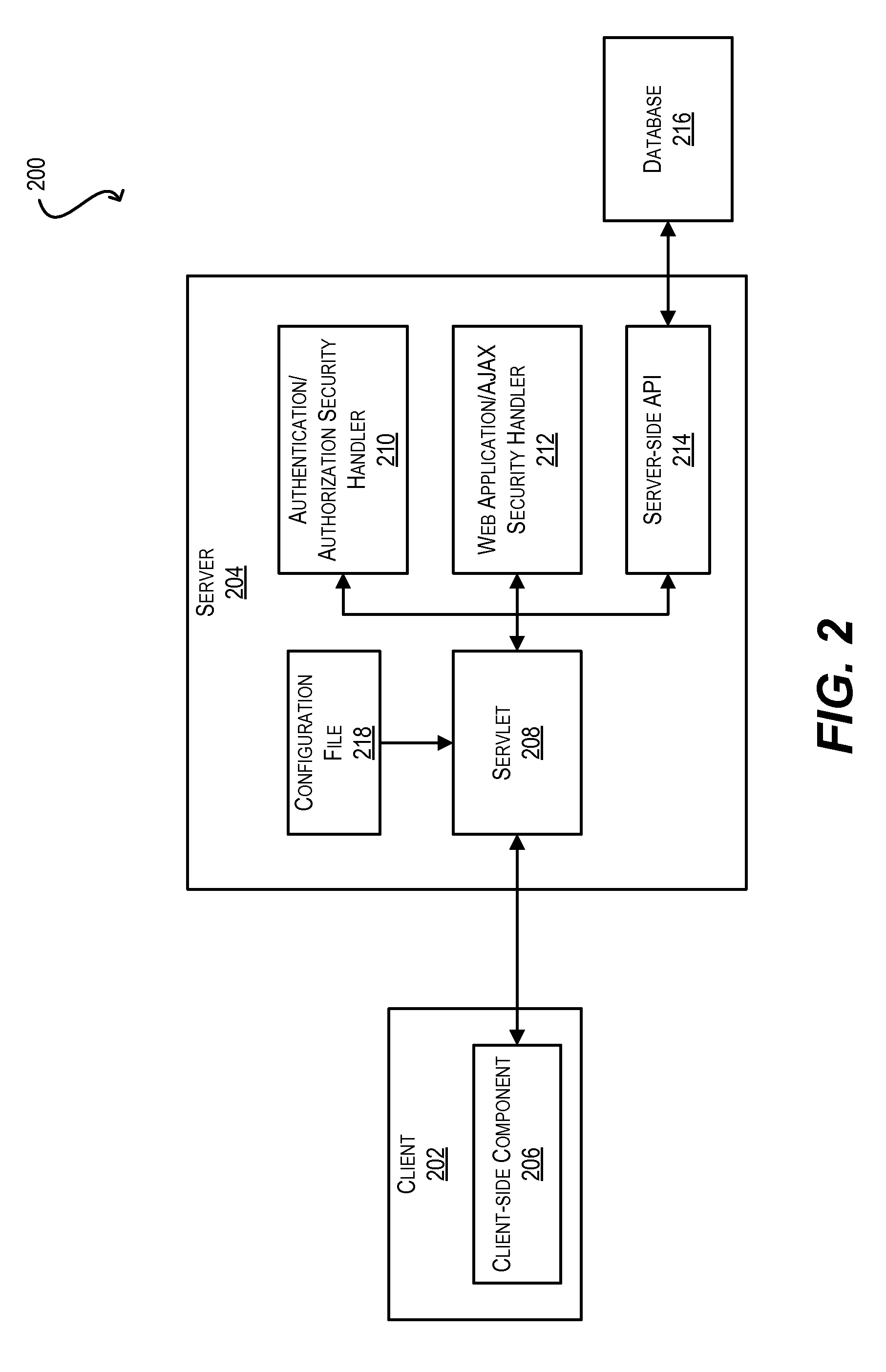Secure framework for invoking server-side apis using ajax
a secure framework and server-side API technology, applied in the field of web applications, can solve problems such as awkward and unintuitive user interface experience, insufficiently addressing the many different types of security vulnerabilities, and affecting the performance of server-side applications, so as to achieve the effect of mitigating various security attacks
- Summary
- Abstract
- Description
- Claims
- Application Information
AI Technical Summary
Benefits of technology
Problems solved by technology
Method used
Image
Examples
Embodiment Construction
[0024]In the following description, for the purposes of explanation, numerous specific details are set forth in order to provide an understanding of the present invention. It will be apparent, however, to one skilled in the art that the present invention may be practiced without some of these specific details.
[0025]Embodiments of the present invention provide techniques for securely invoking server-side APIs (such as Java APIs) from client-side Web application code (such as JavaScript) using AJAX. In one set of embodiments, the techniques described herein may be used in the enterprise software context to provide a standardized and secure mechanism for invoking server-side APIs in Web-based enterprise applications. In these embodiments, the techniques of the present invention may interface with (and take advantage of) security functions that are already implemented in existing enterprise application frameworks (such as the Oracle Applications Framework). In other embodiments, the tec...
PUM
 Login to View More
Login to View More Abstract
Description
Claims
Application Information
 Login to View More
Login to View More - R&D
- Intellectual Property
- Life Sciences
- Materials
- Tech Scout
- Unparalleled Data Quality
- Higher Quality Content
- 60% Fewer Hallucinations
Browse by: Latest US Patents, China's latest patents, Technical Efficacy Thesaurus, Application Domain, Technology Topic, Popular Technical Reports.
© 2025 PatSnap. All rights reserved.Legal|Privacy policy|Modern Slavery Act Transparency Statement|Sitemap|About US| Contact US: help@patsnap.com



